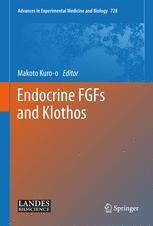

Most ebook files are in PDF format, so you can easily read them using various software such as Foxit Reader or directly on the Google Chrome browser.
Some ebook files are released by publishers in other formats such as .awz, .mobi, .epub, .fb2, etc. You may need to install specific software to read these formats on mobile/PC, such as Calibre.
Please read the tutorial at this link: https://ebookbell.com/faq
We offer FREE conversion to the popular formats you request; however, this may take some time. Therefore, right after payment, please email us, and we will try to provide the service as quickly as possible.
For some exceptional file formats or broken links (if any), please refrain from opening any disputes. Instead, email us first, and we will try to assist within a maximum of 6 hours.
EbookBell Team

0.0
0 reviewsFibroblast growth factors (FGFs) have been recognized primarily as autocrine/paracrine factors that regulate embryonic development and organogenesis. However, recent studies have revealed that some FGFs function as endocrine factors and regulate various metabolic processes in adulthood. Such FGFs, collectively called endocrine FGFs, are comprised of three members (FGF15/19, FGF21, and FGF23: FGF15 is the mouse ortholog of human FGF19). These endocrine FGFs share a common structural feature that enables the endocrine mode of action at the expense of the affinity to FGF receptors. To restore the affinity to FGF receptors in their target organs, the endocrine FGFs have designated the Klotho family of transmembrane proteins as obligate co-receptors. By expressing Klothos in a tissue-specific manner, this unique co-receptor system also enables the endocrine FGFs to specify their target organs among many tissues that express FGF receptors.